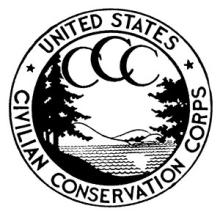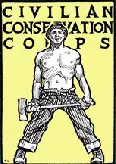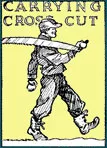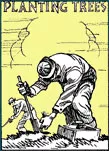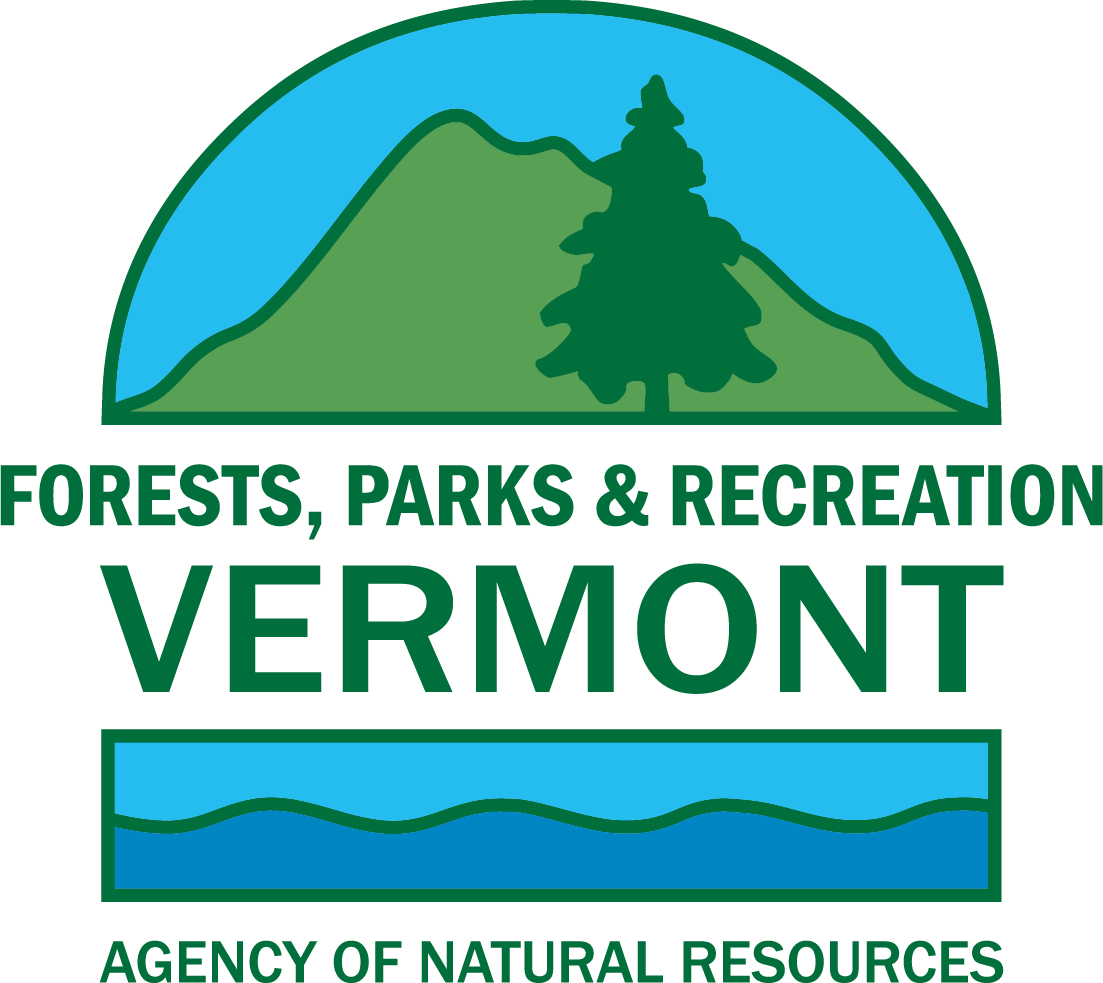Vermont has a rich history of people taking care of the land. The beginning of this rich history is with the Western Abenaki people who have called this land, N’dakinna, home for over 10,000 years. Our state parks are on the unceded land of these original inhabitants. The People of the Dawnland have cared for the land for generations and continue to do so. Their relationship to the land calls us to learn to be better caretakers of the land ourselves. We pay our respects to the ancestors who were here for all time and honor with gratitude this land and all it gives us. May we learn from their wisdom and steward the land in the state parks and beyond.
The CCC and Vermont State Parks
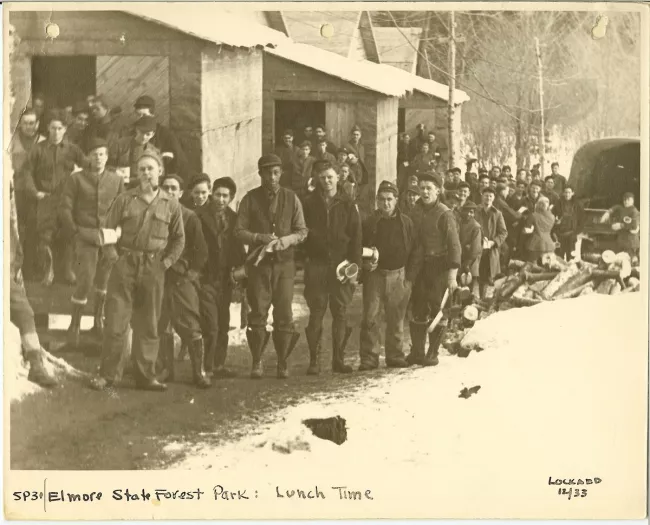
President Franklin Delano Roosevelt created the CCC (Civilian Conservation Corps) back in 1933 shortly after taking office. Roosevelt was charged with putting Americans back to work in the wake of the Great Depression, and, with the help and organization of Vermont State Forester Perry Merrill, the CCC quickly took up work across the state of Vermont.
The following is exerpted from Merril's autobiography, The Making of a Forester, An Autobiographical History, © Perry H. Merrill 1984.
In March of 1933, President Roosevelt proposed as a measure of unemployment relief to put unemployed youths aged eighteen to twenty five to work in our forests. Congress quickly passed the Emergency Conservation Works Act (ECW), thus creating the Civilian Conservation Corps (CCC).
This nationwide program was originally designed to enroll about 250,000 youth who must be physically fit, unmarried and unemployed, have dependents and be willing to send an allotment home to their families. Vermont was originally allotted an enrollment of 750 youths, which would require five camps. The CCC enrollees were given $30.00 per month, of which they sent $25.00 monthly to their parents.
By July 20, 1933, Vermont's CCC ranks had swelled to ten companies housed at Camp Wilson ready to start work at once on the East Barre Dam construction project. The dam was completed almost entirely with hand labor, and involved the clearing of brush and trees, and construction of a 600 foot trench for the concrete tunnel under the dam. This hand work required the use of over six hundred wheelbarrows, picks, shovels, sledges and drills.
The completed dam had a 400 foot width with sides sloping up to an 85 foot crest located 60 feet above the crest of the original stream. It measured 1,500 feet in length with a spillway 100 feet wide, and required 308,000 feet of earth, 84,000 cubic yards of rock fill, 200 cubic yards of concrete, and 1,300 tons of steel. This serves as an example of the accomplishments that took place in Vermont and other states from this program.
At the end of six years the number of young men with CCC experience had reached 2,500,000. The number of Vermont men given employment under this program was 11,243, and the number of men who worked in Vermont (regardless of origin) was 40,868. Approximately two thousand youths from Massachusetts, three hundred from Rhode Island and a few hundred from New York worked in Vermont camps.
Forestry work projects in Vermont included thinning, pruning, harvesting for state, municipal and private forests, and disease and fire control projects. Recreation projects encompassed camping areas, picnic areas, bathing areas, ski areas, roads and trails. Recreation developments were also made on some state forests especially where there was water frontage. These projects included skiing facilities, picnic and camping areas, and bathing beaches. The majority of recreational development on state forests and parks was accomplished by the CCC during the years 1933 to 1942. A major contribution was in the area of fire prevention. Seven new steel fire towers were built; three new wooden towers and eight new lookout cabins were constructed. Telephone lines were built or extended, and valuable fire roads were constructed. Recreational roads were built. wildlife habitat was improved, and ski trails were laid out.
Former CCC'er Walter Edmonds returns to Mt. Ascutney State Park
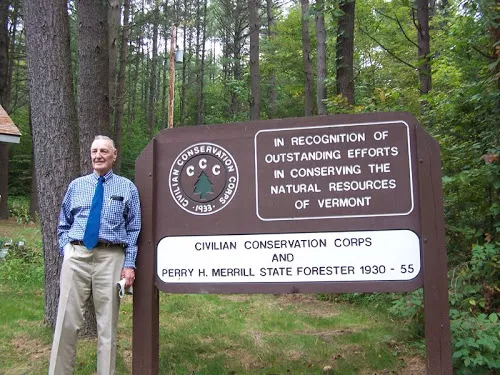
The CCC accomplished much during their time. They
- Planted 1,255,000,000 tree seedlings over 1,255,000 acres of land
- Fought tree diseases on over 16,722,000 acres
- Installed 64,374 miles of telephone lines to assist in forest fire protection
- Constructed more than 3,400 fire lookout and observation towers
- Constructed 3,982,000 check dams for nation-wide erosion control program
- Constructed 41,000 bridges and 44,475 buildings of various types
You can still see the fine work of the CCC today at many Vermont State Parks, including:
- Allis State Park
- Coolidge State Park
- Crytal Lake State Park
- Elmore State Park
- Gifford Woods State Park
- Maidstone State Park
- Molly Stark State Park
- Mt. Ascutney State Park
- Mt. Philo State Park
- New Discovery State Park
- Ricker Pond State Park
- Sand Bar State Park
- Stillwater State Park
- Thetford Hill State Park
- Townshend State Park
- Underhill State Park
- Wilgus State Park
